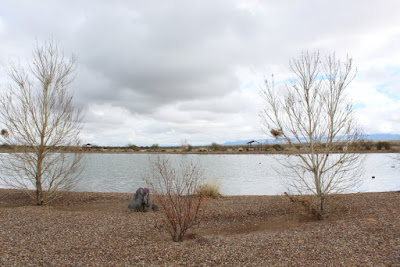
Canoa Ranch has an interesting history. Archaeologist believe Indians first inhabited the area in about 10,000 BC and by 2000 BC the Hohokam Indians were growing maize (corn) and other crops. Their farming techniques were refined and by 1650 AD the Hohokam people had developed a complex flood irrigation system that channeled water from the Santa Cruz River to their fields.
In 1690 Father Eusebio Francisco Kino was the first recorded European to arrived in the area for the purpose of establishing a series of missions and in 1775 the Juan Batista de Anza expedition passed through the ranch and set up a "paraje" (camp) along the river. Other Spaniards settlers kept arriving in "New Spain" and in 1820 Tomas and Ignacio Ortiz paid $250 for 17,000 acres of land called the San Ignacio de la Canoa Grant. However, after the Gadsden Purchase in 1853, the land became part of the United States and title to the land was in question. After years of litigation, the dispute was finally resolved in favor of the Ortiz family. In 1875 the land was sold to a large cattle company that was ranching in the area, but over the years the ranch was neglected and started to decline significantly in the 1960s. The land was then sold several times for its valuable water rights and in 1997 voters approved $2 million in bonds to purchase the ranch for a Pima County Park.
The 1955 movie Oklahoma was filmed mostly in Arizona and substantial parts of the movie were filmed at the Canoa Ranch. The film opened with Curly riding his horse through a Canoa Ranch cornfield on his way to Aunt Eller's farm to see her niece Laurey Williams. When Curly sang the hit song "Surrey With the Fringe On Top," he was ridding in a surrey across Canoa Ranch in Arizona, not Oklahoma!
I remember when Oklahoma opened at our local movie theater on Christmas day and I went with my two brothers to see the movie. (It was a tradition that we had Christmas dinner with the Guy Barnes family and then the kids went to the movie after dinner.) When our Mother asked us how we liked the film, we said it was terrible! The cowboys just danced around with their pants tucked into their cowboy boots and when Curly and Jud got into a fight they just pretended to hit each other. (You have to remember that we were accustom to seeing John Wayne movies where John Wayne always beat up the bad guys in a "real" fight.)
Anyway, we started our visit at Canoa Ranch by walking around the lake that is known for the number of different variety of birds that can be seen from the hiking trails. In 2018 a project was started to rehabilitate the area by removing non-native plant materials and replacing them with historic and native vegetation. Thus, the area around the lake is currently somewhat barren.
 |
| Santa Rita Prickly Pear Cactus (Opuntia santarita) |
The Foreman's and Tradesman's houses were located a short distance away, closer to the other ranch buildings. Next to the corrals was a long, large building that included a Grain Room, Blacksmith Shop and Tack Room.
The ranch's massive Retaque Corrals are considered to be some of the best remaining examples of their kind in Arizona. ("Rataque" is derived from the Spanish word "retakar." meaning to "stack up.") The wood used to build the corrals was cut from Mesquite trees near the river and laid horizontally to make fences two feet thick and five-to-six feet tall.
BONUS HISTORICAL PICTURES
Wileta, Ronnie, Elden, and Jerry (Probably Summer 1944).
Wileta told me that when Elden was a young boy he tried to jump on the side of a wagon that his father was pulling with a team of horses, but he slipped and the wagon ran over his leg, severely breaking his leg bone. They tried to set the broken bone, but the leg didn't heal correctly. After that, he always walked with a limp. I remember when I was a young boy I would walk behind him and try to imitate his limp when I walked.

















No comments:
Post a Comment